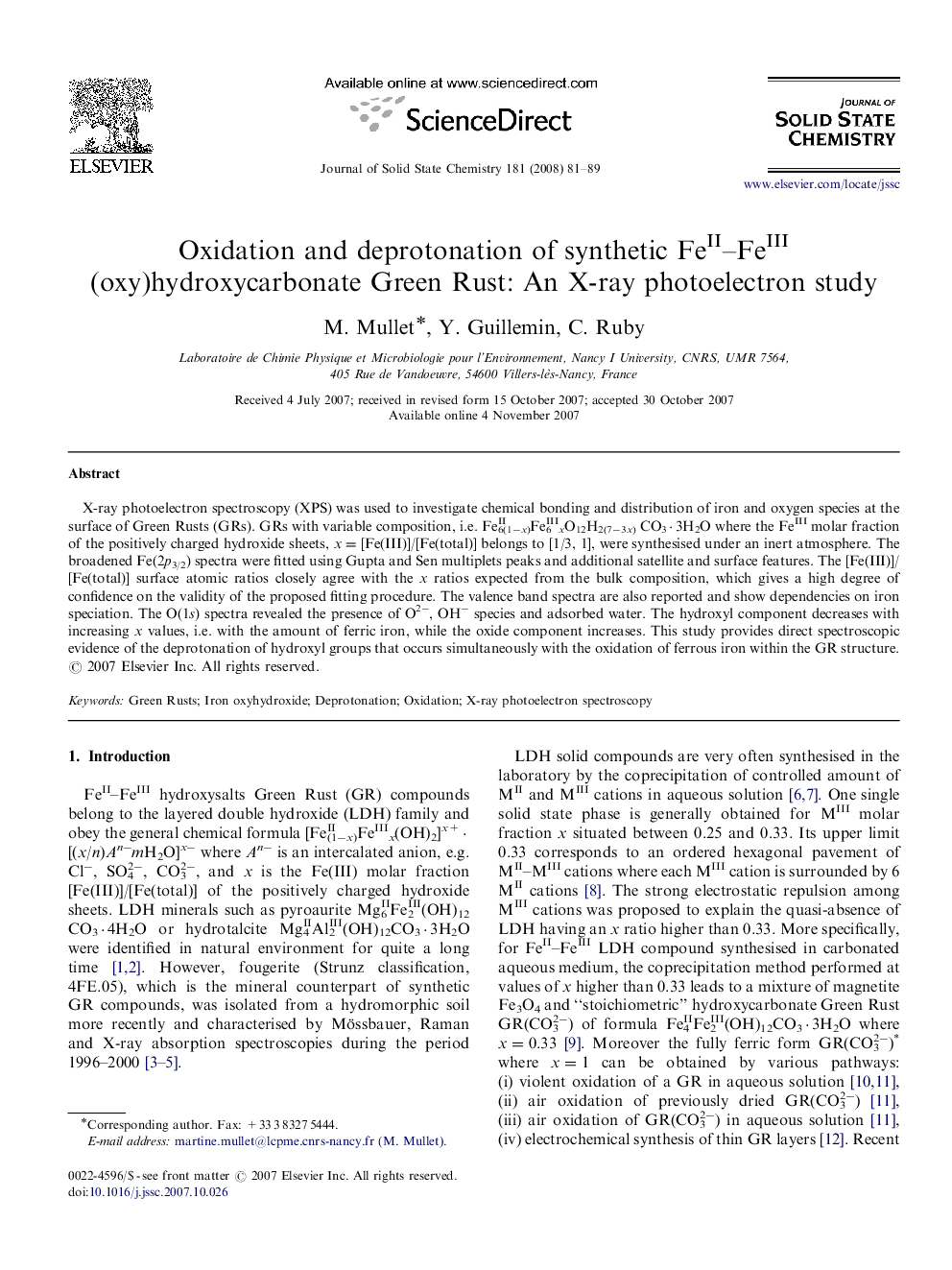| Article ID | Journal | Published Year | Pages | File Type |
|---|---|---|---|---|
| 1332486 | Journal of Solid State Chemistry | 2008 | 9 Pages |
X-ray photoelectron spectroscopy (XPS) was used to investigate chemical bonding and distribution of iron and oxygen species at the surface of Green Rusts (GRs). GRs with variable composition, i.e. FeII6(1−x)FeIII6xO12H2(7−3x) CO3·3H2O where the FeIII molar fraction of the positively charged hydroxide sheets, x=[Fe(III)]/[Fe(total)] belongs to [1/3, 1], were synthesised under an inert atmosphere. The broadened Fe(2p3/2) spectra were fitted using Gupta and Sen multiplets peaks and additional satellite and surface features. The [Fe(III)]/[Fe(total)] surface atomic ratios closely agree with the x ratios expected from the bulk composition, which gives a high degree of confidence on the validity of the proposed fitting procedure. The valence band spectra are also reported and show dependencies on iron speciation. The O(1s) spectra revealed the presence of O2−, OH− species and adsorbed water. The hydroxyl component decreases with increasing x values, i.e. with the amount of ferric iron, while the oxide component increases. This study provides direct spectroscopic evidence of the deprotonation of hydroxyl groups that occurs simultaneously with the oxidation of ferrous iron within the GR structure.
Graphical abstractX-ray photoelectron spectroscopy (XPS) is used to investigate chemical bonding and distribution of iron and oxygen species at the surface of Green Rust (GR) compounds. First spectroscopic evidence of the deprotonation of hydroxyls groups occurring simultaneously to the oxidation of Fe(II) into Fe(III) species is provided.Figure optionsDownload full-size imageDownload as PowerPoint slide
